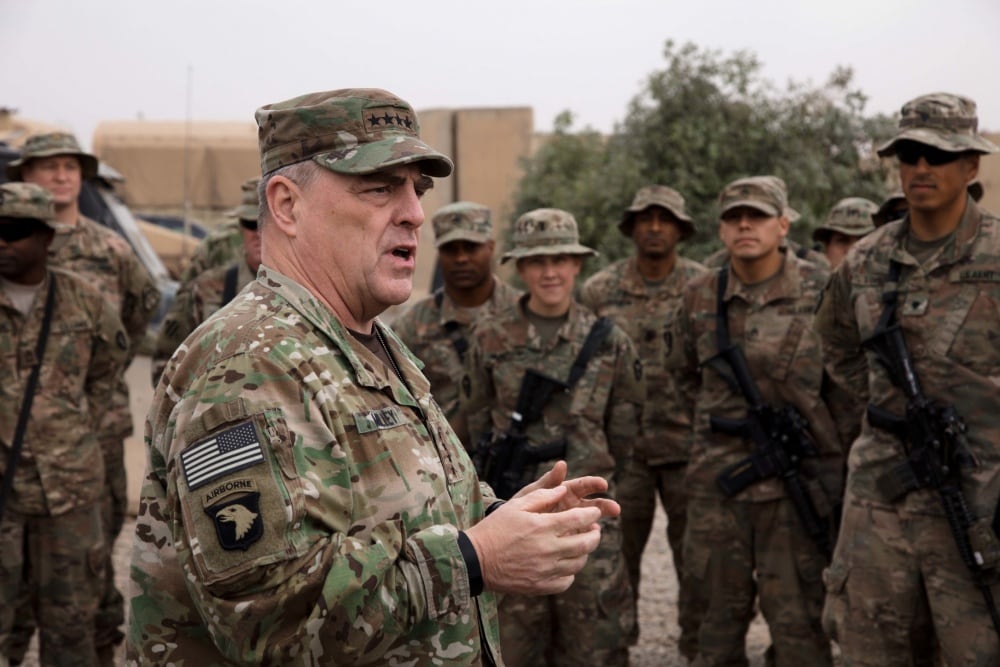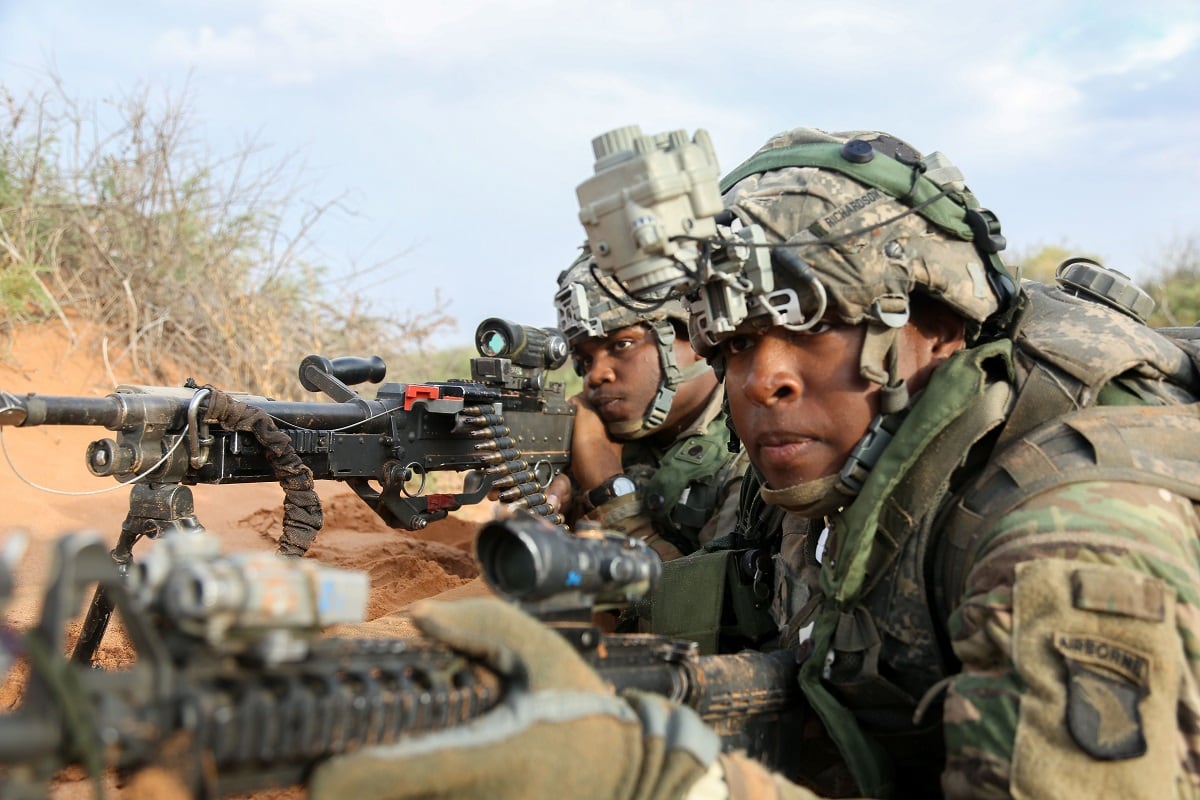The Army is in the midst of a transition that could take up to 30 years, Chief of Staff Gen. Mark Milley said Wednesday, as the force shifts from focusing on counterinsurgency to sustained ground wars against enemies that are closer in size and capability.
In order to meet the threat, the service is going to have to revamp its equipment, from ground vehicles and helicopters to communications systems and individual soldier gear, he told an audience at an AUSA event outside Washington, D.C.
“We are in that change, literally in that fundamental change, in the character of war, right this minute,” he said.
The Army’s recently launched modernization command is tasked with quickly and efficiently acquiring those pieces of the puzzle.
“And none of that’s going to matter if you’re dead,” Milley added, emphasizing the need to upgrade the Army’s long-range missile defense systems.
But beyond the big ticket items, he said, the Army has to prioritize preparing its No. 1 asset for war.
“We owe our soldiers the absolute best equipment, training, leader development that is humanly possible, that the largest and most competent economy in the world can produce,” he said. “The best everything, all the way down to the boot.”
Extreme demands
The so-called “Big War,” against powerful militaries with comparable equipment and training to the U.S., will require long stints under austere conditions, Milley said.
“This environment, this future war, this operational environment that we’re talking about, is going to be extremely demanding on the individual soldier,” he said.
Developing exoskeletan-like body armor is one way the Army is trying to prepare soldiers for drawn-out ground wars. Another is cognitive training, Milley said, to help keep their wits about them in extreme environments.
Then there’s synthetic training, which could allow units to get the repetition they need before deployment, in a more cost-effective way.
“You can’t really, truly replicate fear in any simulation. So there’s some limits to all the simulations,” he said. “But having said that, for leaders, I would argue that decision-making is fundamental to what leaders do in combat.”
And with the ability in virtual training to change terrain, weather and other variables, units can get more diverse preparation than spending days at a traditional training center under whichever conditions happen to be the case that day.
“The technology exists for every leader in the Army to practice tactics and decision-making under all kinds of different conditions and environments and terrains, and you can do it all day long,” Milley said. “And you can do it again the next day and the next day and the next day.”
And in a perfect world, he said, every company would have their own suite, to optimize their training schedules.
“Three, three-and-a-half hours of really intense PT — to get in top physical condition,” Milley suggested to start the day, followed by a meal, several repetitions in the trainer, another meal and another training session.
“And at the end of the day, do your Article 15s,” he joked. “And that’s a good training day.”
RELATED

Funding the future
To illustrate the need for a budget that supports modernization, Milley told the story of retired Gen. Dick Cody, a former Army vice chief of staff, who flew an AH-64 Apache helicopter in one of the opening attacks against Saddam Hussein during Operation Desert Storm.
“He was able to do that because of years of training, and because there were people in the ‘70s who said, ‘I want a new attack helicopter. I want to replace the [AH-1] Cobra,’ “ Milley said.
A similar push is needed now to get decades ahead of threats, he said.
“If all you do is focus on the present, and you mortgage the future, then you’re going to be in a world of hurt 10, 15 years from now,” he said.
RELATED

In the near-term, he hinted, a decision about an appropriations bill — or another continuing resolution — is due Friday.
In the long-term, the Army needs the right number of troops to stay prepared to do both counterinsurgency and wage high-end war.
“To do that, what we’ve said is we want 66 percent of the ground force at the highest levels of combat readiness at a moment in time,” he said. “We’re building toward that level of readiness.”
However, Milley hesitated to say how many troops the Army will need, ahead of an official goal forthcoming in Defense Secretary Jim Mattis’ National Defense Strategy.
“We’re moving in the right direction, I’ll put it at that,” he told Army Times.
Meghann Myers is the Pentagon bureau chief at Military Times. She covers operations, policy, personnel, leadership and other issues affecting service members.









